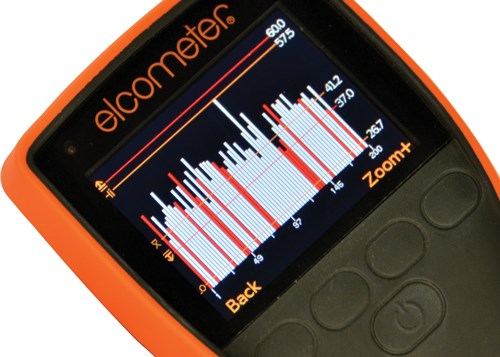Published
Shipshape Testing: Software Meets IMO PSPC Requirements.
\New regulations apply to seawater ballast tanks of all types of ships of not less than 500 gross tonnage, and double-side skin spaces arranged in bulk carriers of 150 meters in length and upwards
#regulation #measurement-testing
Contributor
The International Maritime Organization (IMO) adopted a Performance Standard for Protective Coatings (PSPC), setting new coating standards that apply to ballast water tanks on new ships being delivered after July 2012.
The new regulations—meant to ensure longer life of the vessels—apply to seawater ballast tanks of all types of ships of not less than 500 gross tonnage, and double-side skin spaces arranged in bulk carriers of 150 meters in length and upwards.
While paint and powder coating suppliers have worked to meet the new coating specifications for ships that are to be delivered after July, the regulations also set new standard technical regulations for inspection and verification.
Translation: paperwork and more paperwork.
Government and regulatory agencies now want to know the history—and see documentation—of surface preparation for coatings, inspections, data collections and reporting, as well as auditing and assessment measures.
That increase in filings led inspection equipment manufacturer Elcometer, Inc to develop EchoShip, a paperless computer system for meeting marine coating inspection requirements (visual, manual and electronic) in a single software package, which helps with report writing and reducing inspection times.
“The software provides traceable, real-time information on the status of all coating inspections throughout the ship build,” says Elcometer’s John Fletcher, a technical support manager. “It then automatically generates the IMO PSPC-compliant Coating Technical File (CTF) at the click of a button.”
The coating reporting requirements can be complex. IMO PSPC regulations say that, for each area under consideration, a shipyard must record—at both the block and the erection stages—the coatings and approved coating systems to be used, together with “Type Approval Certificates.” The inspector’s name and qualifications, along with the primary- and secondary-stage inspection results, also must be recorded.
The inspection results can get tricky because they are done visually, manually and electronically, and must include details such as shop primer surface inspections, relative humidity and dew point temperatures, surface and air temperatures, edge grinding, welds and spatter, dry film thickness and continuity, salt cleanliness, runs and sags, surface profile, and damage and inclusions.
With that amount of significant record keeping required to comply with the IMO PSPC regulations,
Elcometer knew there would be a need to automate inspection data management in order to maximize efficiencies of its customers’ operations.
Fletcher provides this example of the large amount of data needed to be collected: for a crude oil carrier that is over 1,500 feet in length and about 200 feet wide, with a depth of 66 feet, the total ballast coated area is in excess of 3 million ft2. Using the SSPC-PA2 standard for coating thickness measurement, each flat area requires five spot readings, each the average of three readings per 10 m2 or 100 ft2.
“If we assume that there are two coating layers applied, inspecting the vessel’s outer surfaces alone under SSPC-PA2 would require 156,000 individual coating-thickness readings to be taken and recorded,” Fletcher says. “This does not take into account any complex areas or the superstructure itself.”
The software Elcometer designed is broken into eight sections:
- Coatings Library: Creation and maintenance of the approved coatings supplier, together with product data sheets, material safety data sheets and other documents.
- Ship Structure: Using architects’ drawings or block diagrams, each area under consideration can be identified. Once set up, users can use the diagram to visually see the status of each inspection.
- Coating System: Each approved coating system can be created from the coatings within the library. Systems can be re-issued if a specification is changed.
- Inspection Records: Visual, manual and digital inspection records can be recorded automatically using PDAs running ElcoShip Mobile or manually. Records by task, date, area under consideration and inspector, together with any requirement for rework or concessions, are all recorded. All inspections include a digital signature.
- Register of Inspectors: Details of all inspectors, together with their certifications, signatures, access rights to ElcoShip and other personnel documentation can be stored here.
- Daily Log: Summary of activities undertaken in the day are automatically reported in the Daily Log for the qualified inspector to review, add comments and approve.
- Inspection Regimes: Individual inspection points that can be grouped together as required.
- Change Log: Automatically generates a record of all activity undertaken, providing a full and instant audit trail.
Fletcher says ElcoShip also provides the inspector with an IMO CTF validation tool, which automatically checks that all data is in place and that all inspections —together with all necessary reworks—have been completed prior to generating the CTF, either as a printed document or as a PDF electronic file.
Through the use of PDAs running ElcoShip Mobile, users can schedule and send inspection tasks to individual inspectors in the field. Inspectors can accept or reject an inspection so that it can be reassigned immediately.
ElcoShip is a result of a joint venture between Elcometer and Safina, a UK company involved in shipbuilding, and is based upon Ecodock, a three-year research and development program, which included industry members from shipbuilding, ship repair and classification societies.n
For more information on ElcoShip, please call 800-521-0635, or visit elcometer.com.
RELATED CONTENT
-
Paint Application Methods
An overview of spraying, dipping, flow coating, and everything in between.
-
Zinc Phosphate: Questions and Answers
Our experts share specific questions about zinc phosphate and pretreatment
-
Preventing Solvent Pop
Preventing solvent pop on an industrial paint line...


















